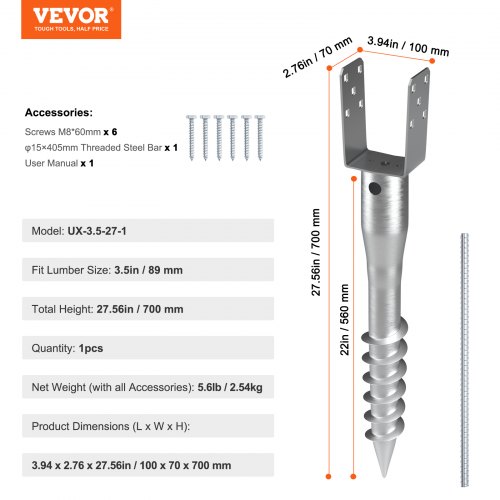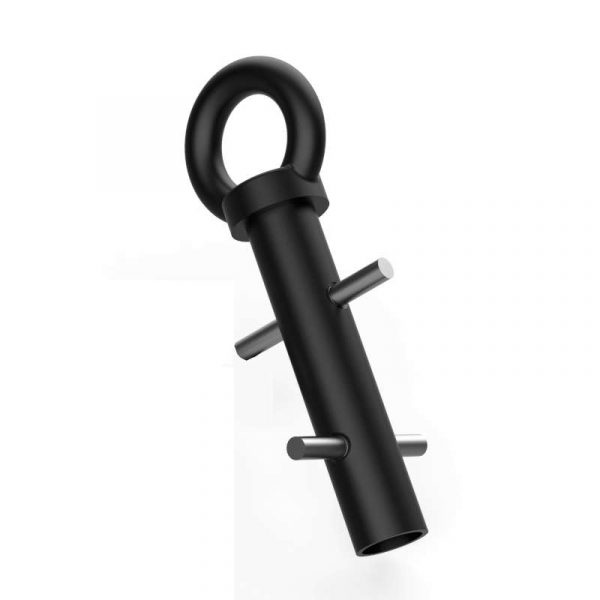Just How Heavy-Duty Earth Anchors Job: A Comprehensive Overview to Soil Anchoring Solutions
Sturdy Earth supports play a vital role in giving stability and assistance in numerous building applications. By embedding deeply right into the ground, they stand up to lateral and upright forces effectively. Different types of anchors accommodate different soil conditions, making them functional. Understanding their auto mechanics and installment techniques is vital for making best use of efficiency. What aspects influence their efficiency, and how do they contrast to typical techniques? The solutions might surprise you.
Recognizing Durable Earth Anchors
Durable Earth anchors function as crucial elements in numerous construction and landscaping jobs, giving security and assistance in tough dirt conditions. These supports work by being embedded into the ground, where they withstand lateral and upright pressures. Their style enables secure attachment to frameworks, guaranteeing they continue to be anchored versus dirt motion or external loads.The efficiency of durable Earth anchors mostly depends upon the kind of soil and the anchor's setup depth. Proper installation techniques are vital, as they determine the anchor's holding capacity. Environmental variables, such as moisture and freeze-thaw cycles, can also impact performance.These supports are often used in applications ranging from protecting fencings and preserving wall surfaces to supporting momentary structures during adverse weather. Recognizing the principles behind durable Earth anchors is vital for specialists seeking to enhance the sturdiness and security of their projects.
Kinds Of Heavy-Duty Earth Anchors
Different sorts of durable Earth anchors are designed to satisfy certain demands based upon soil conditions and project demands. Helical supports, featuring screw-like blades, work in softer dirts, supplying high load capacities and simple installment. Driven anchors, which are hammered into the ground, appropriate for rocky terrains and give prompt load support. Tie-back anchors are commonly made use of in retaining wall applications, permitting lateral assistance by anchoring right into the ground at an angle. An additional kind is the cast-in-place support, ideal for concrete applications, as they are incorporated right into foundations for boosted security. Finally, soil screw supports are flexible alternatives that can be used in different dirt types, supplying reputable tension and compression abilities. Each kind offers unique applications, making sure stability and security in building and construction and landscaping jobs. Understanding these choices enables for educated decisions in choosing the suitable Earth securing remedy.
The Mechanics of Dirt Anchoring

Comprehending the auto mechanics of soil anchoring needs an examination of numerous sorts of Earth anchors and their setup strategies. Each anchor kind presents special attributes that influence its performance in various dirt conditions. Appropriate setup approaches are essential for making the most of the securing system's stability and performance.
Sorts Of Earth Anchors
Earth anchors, essential components in dirt anchoring systems, come in numerous kinds, each made for certain applications and dirt conditions. The most usual types consist of screw anchors, which are twisted right into the ground, giving solid side resistance. Helical anchors include blades that enable efficient setup in numerous dirt types, making them appropriate for both short-lived and permanent applications. Driven supports, normally made from steel, are inculcated the dirt and work in thick or rough settings. Auger anchors make use of a helical style to help with installment in softer soils. Plate anchors consist of a level plate buried horizontally, distributing load over a larger location, ideal for applications requiring high load capabilities in cohesive soils.
Installation Strategies Clarified
Correct installation strategies are crucial for the efficiency of dirt anchoring systems. The procedure normally begins with website evaluation, confirming the picked location can sustain the support's tons. After determining the correct anchor type, proper opening depth and angle need to be established. The setup entails driving the support into the ground using specialized equipment, such as hands-on or hydraulic motorists, to accomplish ideal embedment. Post-installation, tensioning the anchor is critical to assure security; this is often verified with lots testing. Furthermore, surrounding dirt problems should be kept an eye on to avoid displacement. Adhering to these techniques not just enhances the support's performance however also lengthens its life-span, offering reliable support for different applications.
Applications of Heavy-Duty Earth Anchors
While durable Earth supports are frequently connected with building and landscape design, their convenience extends to a variety of applications across different sectors. In civil engineering, they provide necessary assistance for maintaining wall surfaces, ensuring security in locations vulnerable to dirt erosion. The marine industry makes use of these anchors for protecting docks and marinas, avoiding movement triggered by currents and tides. Furthermore, in the telecom industry, sturdy Earth supports are substantial for supporting cell towers and various other tall frameworks against wind forces. Agricultural applications likewise profit, as these supports can secure frameworks like greenhouses and livestock secure fencing, guaranteeing they stand up to harsh climate problems. In sustainable energy projects, such as wind farms, Earth anchors play an essential role in protecting generator foundations, boosting total security and efficiency. This wide array of applications highlights the adaptability and dependability of durable Earth anchors across numerous areas.
Advantages Over Traditional Anchoring Approaches
Although typical anchoring techniques have long been trusted for stability, sturdy Earth supports offer substantial benefits that boost efficiency and performance. One significant advantage is their exceptional load-bearing capacity, which enables them to withstand higher pressures without failure. This stamina makes them optimal for requiring applications, such as in building and construction and utility installations.Additionally, heavy-duty Earth anchors are developed for deeper installation, offering higher security in various soil conditions, consisting of sandy or loose dirts. Their resistance to corrosion and environmental factors ensures a much longer life-span and reduced upkeep expenses compared to conventional methods.Moreover, these anchors can be installed with marginal disturbance to the surrounding area, protecting the honesty of the landscape. On the whole, durable Earth anchors provide a trusted and efficient option for securing needs, exceeding the constraints often connected with standard anchoring strategies.
Installment Process and Finest Practices
The setup process for dirt securing options starts with comprehensive prep work and site analysis to assure peak efficiency. Following this, a step-by-step installment overview offers clear guidelines for efficient execution (Manta Ray anchors). Following these finest methods is essential for accomplishing long-lasting and reputable anchoring outcomes
Preparation and Website Analysis
Reliable preparation and thorough website examination are important steps in the installment of dirt securing services. Prior to setup, the dirt type need to be assessed to identify its bearing ability and suitability for anchoring. Conducting a geotechnical survey can give crucial details about dirt make-up, dampness levels, and potential ground motion. Furthermore, recognizing existing frameworks, greenery, and utilities is vital to avoid disturbance throughout setup. The check these guys out location should be cleared of particles and barriers to guarantee risk-free gain access to for equipment. Weather must also be checked, as adverse conditions can influence both safety and security and setup effectiveness. By carefully preparing the website and assessing all relevant elements, the probability of effective support performance construction site anchors is significantly boosted.
Step-by-Step Installation Overview
A complete setup process is essential for accomplishing optimal performance of soil anchoring remedies. The setup begins with choosing the ideal support type and assuring the site is free from particles. Next off, proper opening placement is established based on tons demands. When the location is established, holes are pierced to the defined deepness and diameter making use of the right tools. The anchor is then put right into the hole, making sure it is straightened properly. After securing the anchor, soil is backfilled and compacted to improve stability. It is important to comply with supplier guidelines throughout the process. A post-installation inspection confirms that the supports are appropriately positioned and operating as intended, supplying trusted support for the designated application.

Maintenance and Evaluation of Earth Anchors
Routine maintenance and evaluation of Earth anchors are necessary for ensuring long-term performance and stability. Regular checks enable the very early detection of issues such as corrosion, loosening up, or soil movement. Examiners need to try to find indications of corrosion or destruction on the support components, specifically at the link factors. Additionally, the bordering soil should be examined for erosion or modifications in wetness content, which can affect anchor effectiveness.It is advisable to develop a regular evaluation timetable, preferably a minimum of annually, relying on ecological conditions. During examinations, all noticeable components ought to be cleansed to get rid of dust or particles that might conceal possible issues. Any indicators of distress, such as turning structures or uncommon settling, need to prompt instant evaluation. Correct paperwork of evaluations can help in tracking anchor efficiency gradually and facilitate timely maintenance actions, making certain the supports stay functional and reliable.
Frequently Asked Questions
What Materials Are Heavy-Duty Earth Anchors Usually Made From?
Durable Earth supports are generally constructed from durable materials such as galvanized steel or stainless steel, making certain strength and resistance to corrosion. These materials give long-lasting support and security in various dirt problems and applications.
Just How Do Dirt Conditions Influence Anchor Efficiency?
Dirt problems significantly affect anchor performance. Factors such as dirt type, moisture content, and compaction impact the support's grip and stability, with cohesive dirts commonly offering far better resistance than sandy or loosened dirts, impacting general effectiveness.
Can Heavy-Duty Earth Anchors Be Recycled After Elimination?
Heavy-duty Earth supports can be recycled after removal, given they are checked for damages and wear. Proper cleansing and upkeep boost their longevity, guaranteeing reliable efficiency in subsequent installations when problems enable risk-free reinstallation.
What Are the Environmental Influences of Using Earth Anchors?
The environmental effects of making use of Earth supports consist of possible dirt disturbance, interruption of local ecosystems, and possible contamination of groundwater. Nevertheless, if utilized responsibly, their advantages often surpass these worries, advertising stability in various applications.
Exactly how Do I Select the Right Anchor for My Task?
